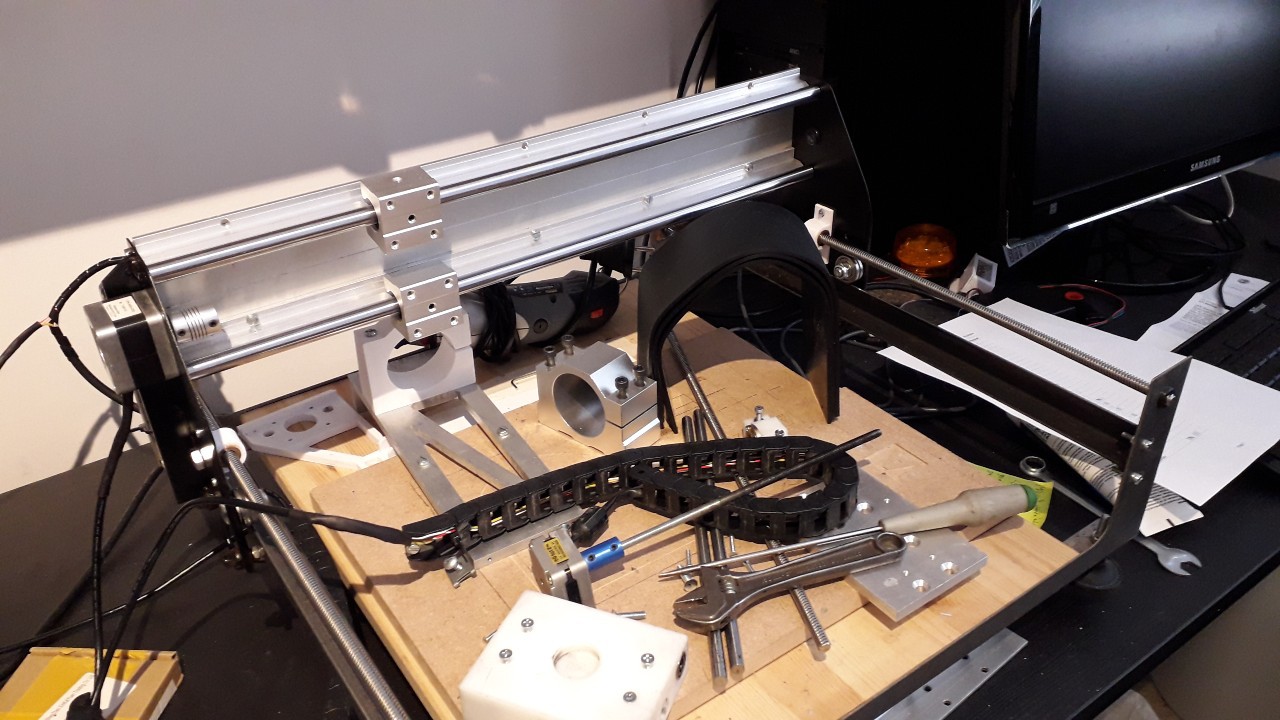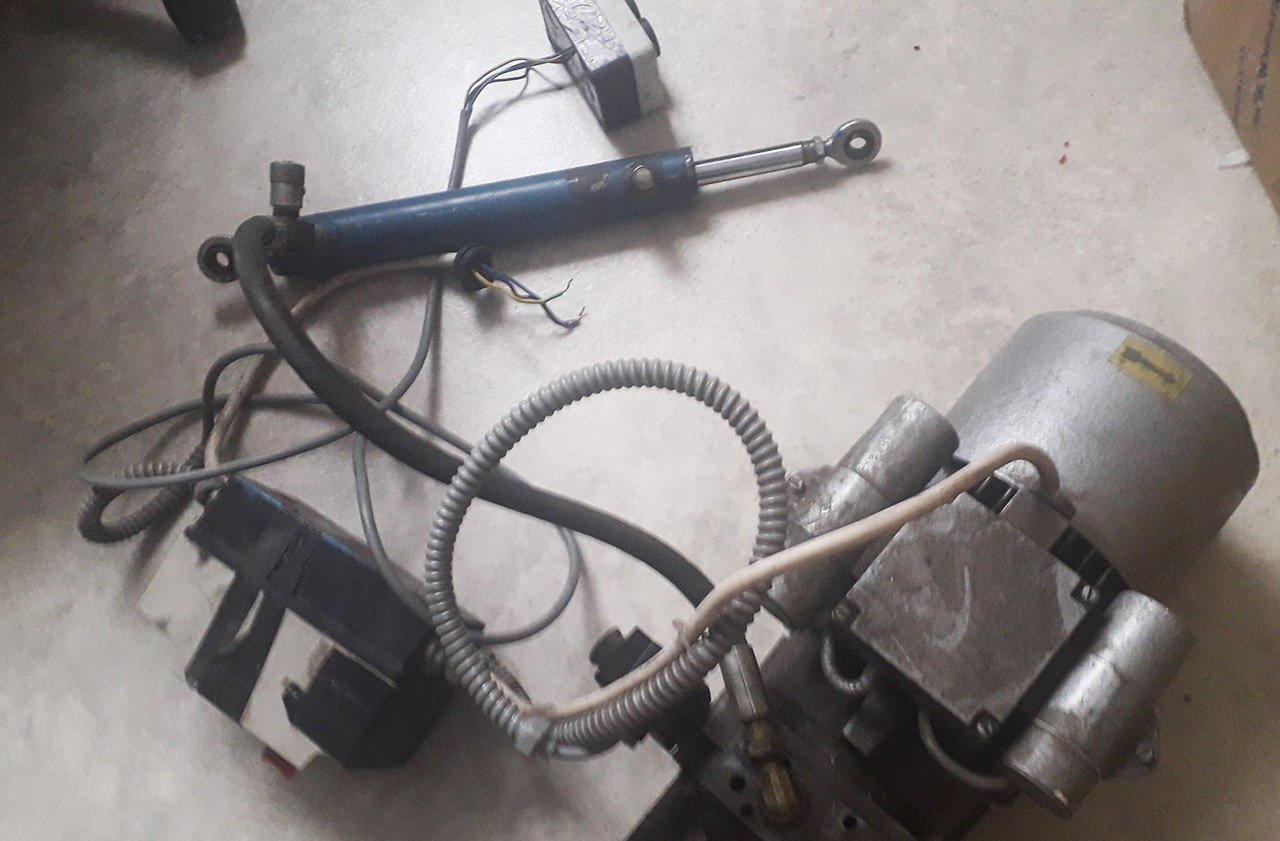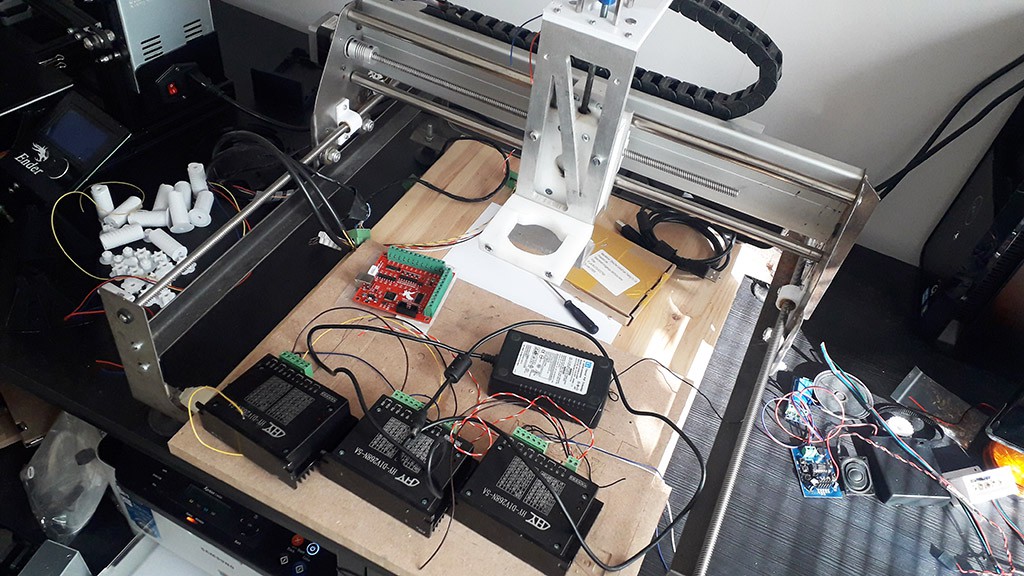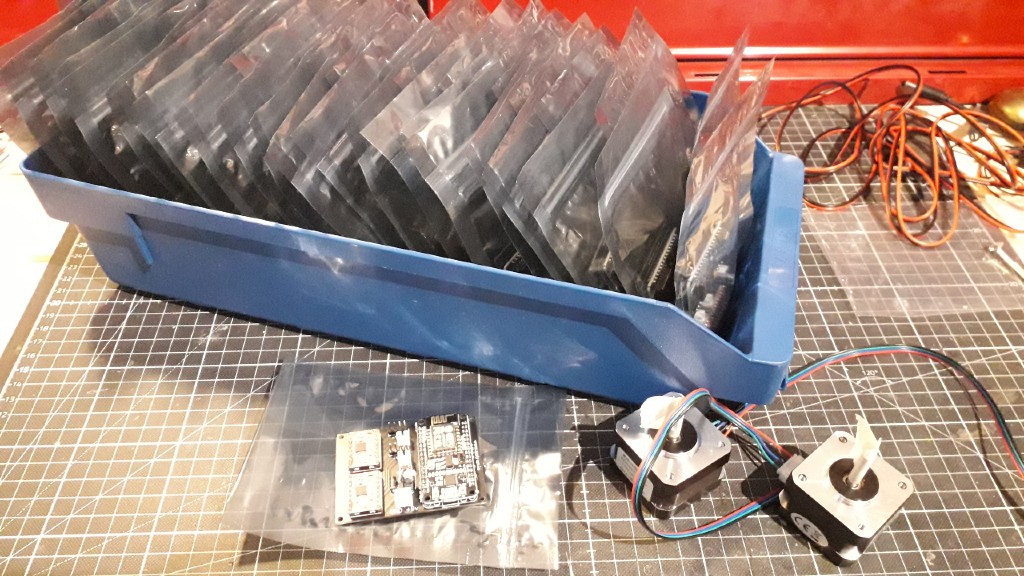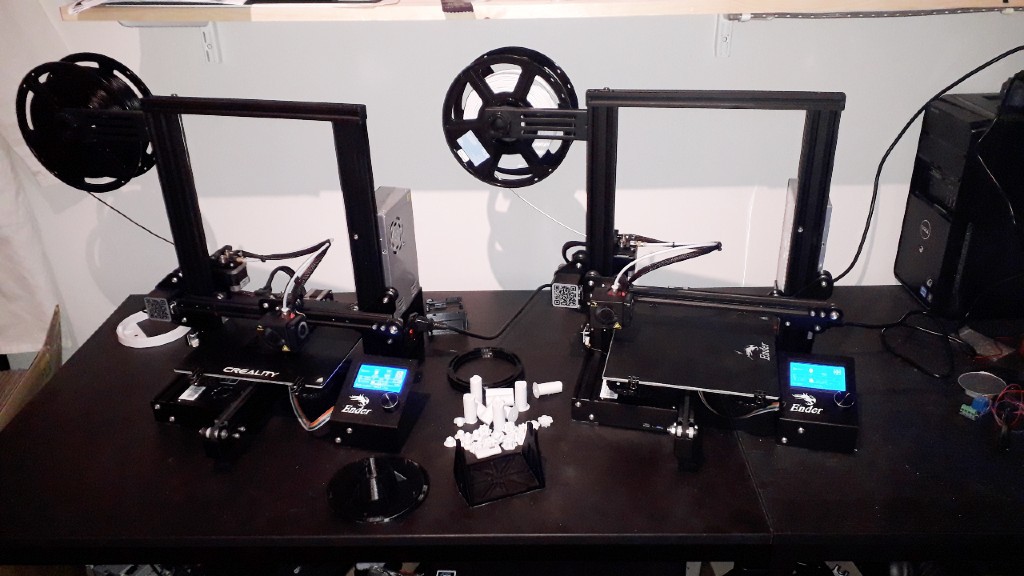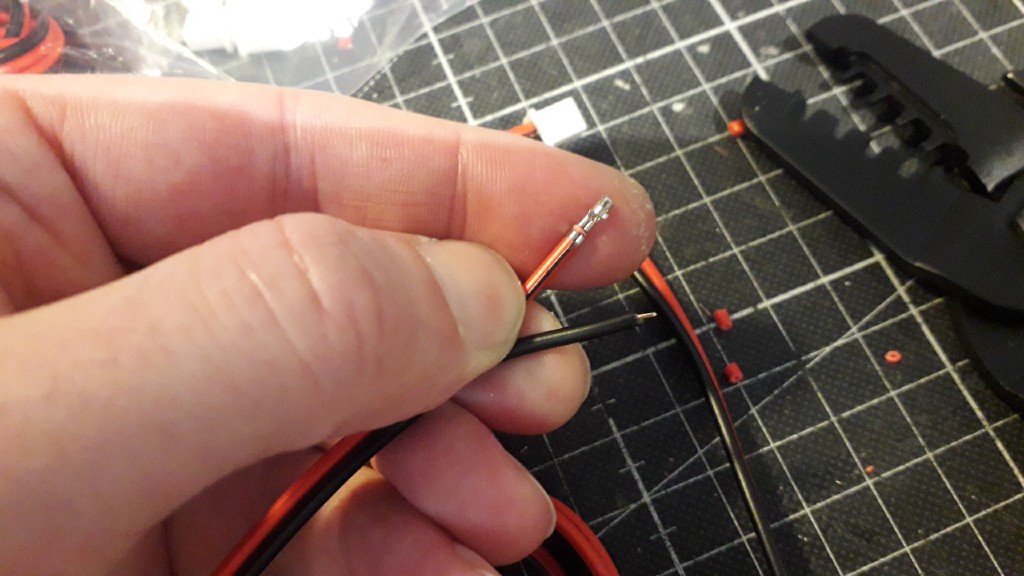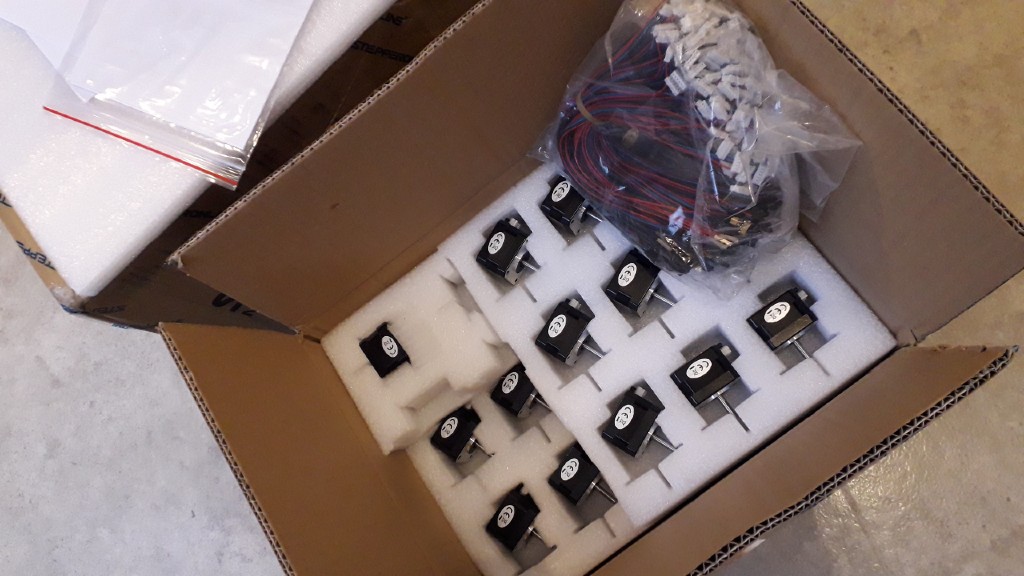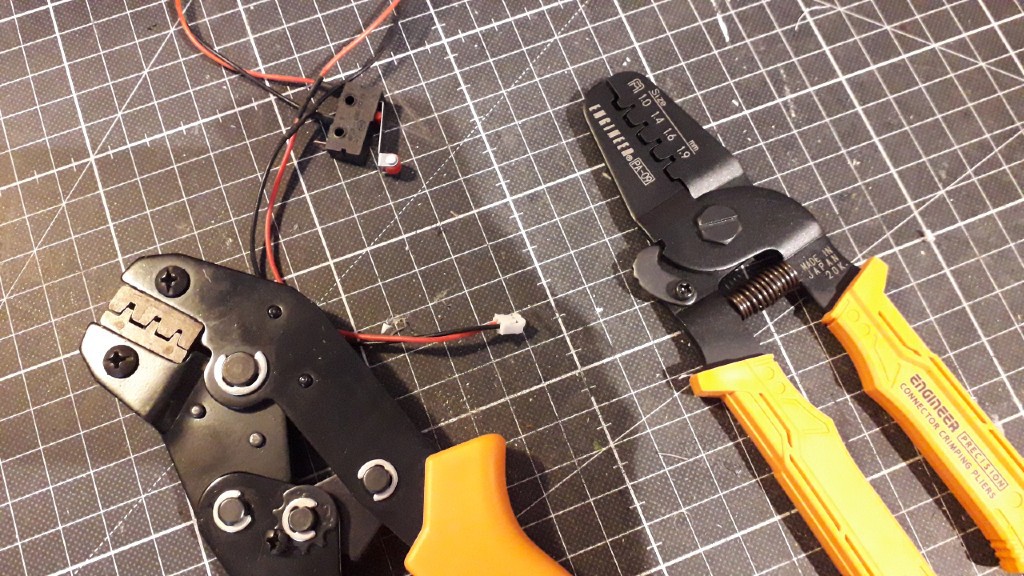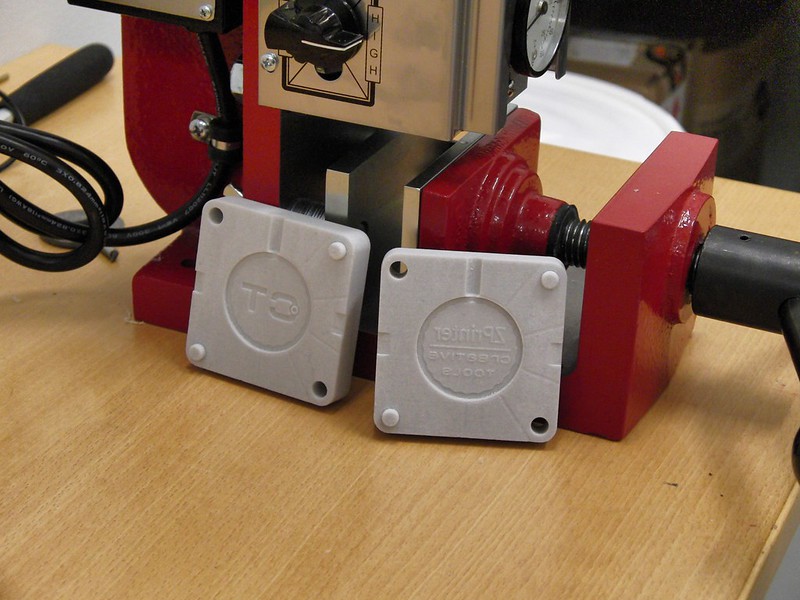-
Toughen up the CNC
04/23/2021 at 05:44 • 0 commentsYup, theres a long way to go until I can make injection molded parts. To be able to produce reusable molds, I needed to stiffen up the old CNC that I built many years ago to be able to handle aluminum.
I've just finished all the rewiring, with a new USB controller since the old one (parallell-port) didnt work with my "new" computer.
At the moment I'm changing the old Y-axis that was made with metal rods I got from an old printer, into a lot more rigid linear rails. This will take the tolerance down from 3mm to 0.5mm. When milling plastics and wood that worked fine, but aluminum is a whole other ballpark.
![]()
To get it down to 0.1mm I will also replace the nuts for the threaded rods to anti-backlash versions. Also a new router spindle is on its way from china, to replace the noisy and cheap dremel-style machine. Then we're good to go...
-
Step by step video
04/20/2021 at 04:34 • 0 commentsSince the Satran only sell as a kit, I put together this video showing step by step how to assemble it. I think its quite straightforward, but a video always helps. Check out the last minute or so and you'll see how the wifi setup works...
-
Hydraulic injection molding machine
04/17/2021 at 07:08 • 0 commentsSomething I know absolutely nothing about; hydraulics. But now's the time to learn. I got a nice discount on this old kit with a pump and a piston, which I will use for the prototype injection molding machine. At the moment I put in around 30hours to print each kit on one of my FDM 3D-printers, which makes it hard to scale up. With injection molding it could take only a few minutes.
![]()
A metal pipe filled with ABS pellets, heated by three 280w band heaters, and a piston that goes down and pushes the melted plastic through a nozzle into an aluminium (or perhaps SLA-printed) mold. Simple!
Why pay $10k when you can make on at home? My customers will thank me when they can buy quality parts without getting a second mortgage.
-
The workshop is growing
04/01/2021 at 14:55 • 0 commentsSince I am looking to build an injection molding machine to speed up production, I will also need a CNC mill to prepare the molds. I have this simple engraving machine that I built many years ago, and now its finally getting a complete overhaul.
![]()
First of I am rewiring all the crappy cables or "birds nest" that I call it. Since I built the machine when I was in school I didnt have cash to buy proper cables and connectors, but used anything I could find.
The machine used to rely on an old Win XP machine with a parallell port that crashed completely some time ago. Now I have bought a USB controller board (the red one in the pic) so I can use it with my newer 32-bit Win7 computer instead. The former computer got cut open and I am rebuilding its case to house all the electronics for the new machine.
Later I will replace some of the mechanics to make it more sturdy. The goal is for it to be strong enough to mill aluminium.
-
Testing, 1, 2, 3...50
03/31/2021 at 16:58 • 0 commentsEvery single board I make is compiled, hooked up to motors and tested before I ship it off to eager customers around the globe. And today was "test day", with 50 boards getting their firmware.
![]()
I still havent gotten the last damn screws in the mail so I can sell some more kits, but hopefully tomorrow. Today I found suppliers closer to home, so the next batch will hopefully only take 3 weeks instead of 7.
-
The small factory
03/28/2021 at 14:05 • 0 commentsOne just isnt enough. At the moment I have two printers making noise in my office almost continuously. But the next few months I probably need to invest in building some sort of injection molding machine, which in turn actually requires another 3D-printer - SLA resin printer - for making the molds. But thats OK, I love 3D-printing almost as much as pizza, which is a lot!
![]()
-
That's quality!
03/25/2021 at 14:23 • 0 commentsI was a bit relucant to spend 60 bucks on a JST crimping tool, but damn it was worth every penny!
![]()
Not the fastest way to produce the cables, because it is "single action" you need to crimp twice for each little connector. But quality takes time, and I am not in it to mass-produce anyways. I am more than happy building top notch rotators that people can enjoy for years to come.
Now I'm only waiting for a batch of screws to arrive, hopefully next week. Then I can open the shop again and take some orders, always nice when your hard work pays off. And I'm sure you are eager also to get your hands on one of the kits!
-
Stepper motor times a hundred
03/24/2021 at 13:45 • 0 commentsIts not everyday that you order a hundred stepper motors, but thats exactly what I did two weeks ago. And now they are here!
![]()
The motors have been one of the biggest issues in scaling up production, since there arent any great producers here in Europe. But after a lot of searching I found a supplier in the far east that can handle the volumes and has a reasonable pricing, but most importantly - can deliver in weeks and not months.
A big shipment of screws are now the last parts that I am waiting for before I can start to sell the next fresh batch of Satrans. Hopefully they'll arrive this week *fingers crossed*
-
It's crimpin time!
03/23/2021 at 13:54 • 0 commentsWhats worst? Crimping micro JST connectors, or pulling out your fingernails with a pair of pliers? Probably the connectors...
![]()
Since I wanted a more professional way of connecting the DC power cable to the control boards, there werent too many options. I bought the quality looking crimp tool to the left for less than 20 bucks, which felt like a reasonable investment. But a few hours later I came to one conclusion... that it's complete and utter crap!
First I abandoned the plan completely and thought of replacing the JST XH connectors with really small screw terminals instead, but that bugged me for days. So I emptied the savings account and went out and got the one to the right. A japanese-made quality tool for 60 USD, called Engineer PA-09. Hopefully it will pay off in the long run, but its probably the most expensive "pliers" I will buy for years to come.
-
Considering injection molding
03/22/2021 at 11:03 • 0 commentsWhen scaling up production, 3D-printing quickly becomes a bad alternative. I have two in the shop working constantly, but because of the long time it takes to make the parts for a single Satran - the satellite tracking antenna rotator - I can only produce around 10 full kits each month.
Its possible to buy another printer or two, but I can do better stuff with my time than to babysit the printers all day. Also the quality of FDM-prints can be quite low, with all the layers showing. But its great when I make tweaks to the design, with almost zero time until I can start producing it.
The professional way of making plastic parts are called "injection molding", which requires very expensive molds. I got a quote here in Sweden for almost $10k for a single mold, and my design uses more than ten different parts. There are some cheaper producers out there but its still a minimum $2k per part. Hence not an option.
![]()
But what if.... I could make it the DIY way?
A surf around the web revealed an exciting new way of making molds with an SLA 3D-printer. The surface finish probably wont be 100% factory-perfect, but it would still be a lot better than 3D-prints, and would bring the production time for some parts down from 6 hours to a few minutes. Also it would combine the possibility of rapid prototyping with the ability to produce tens or hundreds of parts in no-time.
All I need besides an SLA-printer is some heater element, a little metal work and a hydraulic log splitter... perhaps I should give it a try?
SATRAN - Satellite Tracking Antenna
Wifi-controlled, azimuth/elevation antenna rotator.
 Daniel Nikolajsen
Daniel Nikolajsen